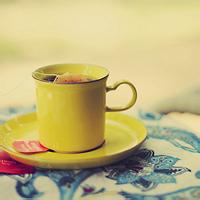Introduction to the quality characteristics of Ethiopian Coffee Bean Story Flavor description
Ethiopian coffee beans
Ethiopians drink coffee in earless 3-ounce cups. After the coffee grounds boil for the first time in the earthenware pot, the hostess pours the coffee into the cup and adds a spoonful of sugar. This way of making coffee is very thick, coffee grounds are not filtered, although most of the residue in the bottom of the cup, but there are still powder suspended in the coffee, not used to people inevitably some choking. Coffee in a clay pot can be brewed two or three times, and if coffee is served, the guest usually leaves after the coffee boils a second time. In addition, Ethiopians like to serve coffee with a small pancake with sweet pepper
Almost every Ethiopian family drinks home-grown coffee. The coffee is picked, exposed to the sun, slightly fermented, and when the coffee fruit dries and hardens, the fruit is crushed by hand to separate the beans wrapped in "parchment". These coffee beans can be stored for a considerable period of time at the right temperature and humidity. However, Ethiopians don't let them store for long, they like to drink fresh coffee.
Ethiopians use a special clay pot to brew coffee. Before brewing coffee, the clay pot is warmed with hot coal. When the pot is heated, the hostess first washes the coffee beans to remove the parchment endocarp and silver skin from the beans. Next, the hostess would add a little rosin to the fire, incense the whole room, then take out a pan-like iron plate, put it on the fire, pour the cleaned coffee beans, and stir them constantly with a spatula. After a few minutes, the beans gradually take on a light brown cinnamon color, followed by a popping sound-usually "one pop" or "two pops." Shortly after the explosion, the coffee beans turn dark brown, then remove the coffee beans into a stone mortar, mash them with a pestle, and grind them to a fine powder. Ground coffee, pour into a warm earthenware pot, and add spices such as cardamom and cinnamon, or an herb called Adam's Health, to boil
A cup of coffee is 98% water, so the water you use to make it must be clean, fresh and free of impurities. It is best to heat the water to 90 to 96 degrees Celsius, which is the temperature at which hot water can extract all the flavors of coffee. Water with insufficient temperature is not available.
Pure water = better coffee
freshness
Coffee is a refreshing drink, its enemies are oxygen, light, heat and humidity. To ensure coffee freshness, coffee should be stored at room temperature in an airtight container protected from light. You can preserve coffee this way for up to a week. For best results, ground coffee should be used immediately.
Fresh coffee = no more than a week.

Important Notice :
前街咖啡 FrontStreet Coffee has moved to new addredd:
FrontStreet Coffee Address: 315,Donghua East Road,GuangZhou
Tel:020 38364473
- Prev

Description of flavor characteristics of Brazilian yellow bourbon coffee beans introduction to the taste of Brazilian Hilado coffee beans
Brazilian yellow bourbon coffee flavor description generally speaking, the price of yellow bourbon is a little too high, but its unique sweetness and thickness are much better than the common new world varieties or red bourbon varieties commonly used in Brazil. Especially in the throat rhyme part, you can feel a warm cashew nut throat rhyme. Producing area: Shirado variety: yellow bourbon treatment method: sun flavor:
- Next

Sweet and bitter Brazilian coffee bean production area planting conditions environment manor flavor description treatment taste introduction
Brazil is vividly compared to the giant and monarch of the coffee world. There are about 3.97 billion coffee trees there, and small farmers now grow 75% of Brazil's total coffee production. The number of coffee producers in Brazil is twice or even three times that of Colombia, the second largest coffee producer in the world. Different from the past
Related
- Detailed explanation of Jadeite planting Land in Panamanian Jadeite Manor introduction to the grading system of Jadeite competitive bidding, Red bid, Green bid and Rose Summer
- Story of Coffee planting in Brenka region of Costa Rica Stonehenge Manor anaerobic heavy honey treatment of flavor mouth
- What's on the barrel of Blue Mountain Coffee beans?
- Can American coffee also pull flowers? How to use hot American style to pull out a good-looking pattern?
- Can you make a cold extract with coffee beans? What is the right proportion for cold-extracted coffee formula?
- Indonesian PWN Gold Mandrine Coffee Origin Features Flavor How to Chong? Mandolin coffee is American.
- A brief introduction to the flavor characteristics of Brazilian yellow bourbon coffee beans
- What is the effect of different water quality on the flavor of cold-extracted coffee? What kind of water is best for brewing coffee?
- Why do you think of Rose Summer whenever you mention Panamanian coffee?
- Introduction to the characteristics of authentic blue mountain coffee bean producing areas? What is the CIB Coffee Authority in Jamaica?

